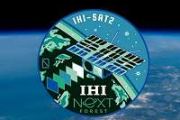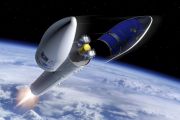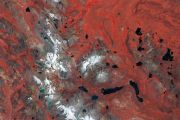
Copernical Team
Robotic SDSS telescopes revolutionize mapping the Milky Way
 The Sloan Digital Sky Survey (SDSS) has launched its most advanced spectroscopic survey yet to create a detailed map of interstellar material within our Milky Way Galaxy.
"Our observing robots have been working hard for a few years already. Now, they are helping us scan the sky in a whole new way," said Dhanesh Krishnarao, an Assistant Professor of Physics at Colorado College and member of
The Sloan Digital Sky Survey (SDSS) has launched its most advanced spectroscopic survey yet to create a detailed map of interstellar material within our Milky Way Galaxy.
"Our observing robots have been working hard for a few years already. Now, they are helping us scan the sky in a whole new way," said Dhanesh Krishnarao, an Assistant Professor of Physics at Colorado College and member of The beauty and danger of Solar Storms on Planet Earth
 Solar storms, with their awe-inspiring displays like the aurora borealis, have captivated humans for centuries. However, these phenomena, caused by solar flares - intense bursts of energy from the Sun - pose significant challenges. Severe solar storms can disrupt telecommunications, satellites, and power grids, creating widespread consequences for global society.
Solar flares release high-
Solar storms, with their awe-inspiring displays like the aurora borealis, have captivated humans for centuries. However, these phenomena, caused by solar flares - intense bursts of energy from the Sun - pose significant challenges. Severe solar storms can disrupt telecommunications, satellites, and power grids, creating widespread consequences for global society.
Solar flares release high- Hubble tracks down a 'blue lurker' among stars
 The name "blue lurker" might sound like a villainous character from a superhero movie. But it is a rare class of star that NASA's Hubble Space Telescope explored by looking deeply into the open star cluster M67, roughly 2,800 light-years away.
Forensics with Hubble data show that the star has had a tumultuous life, mixing with two other stars gravitationally bound together in a remarkable
The name "blue lurker" might sound like a villainous character from a superhero movie. But it is a rare class of star that NASA's Hubble Space Telescope explored by looking deeply into the open star cluster M67, roughly 2,800 light-years away.
Forensics with Hubble data show that the star has had a tumultuous life, mixing with two other stars gravitationally bound together in a remarkable XMM-Newton detects peculiar black hole X-ray patterns
 The European Space Agency's XMM-Newton observatory has revealed unexpected X-ray oscillations emanating from the edge of a supermassive black hole in a nearby galaxy. These findings challenge existing theories of black hole accretion and offer intriguing clues about potential gravitational wave sources for ESA's upcoming LISA mission.
XMM-Newton's observations highlight the complexities of
The European Space Agency's XMM-Newton observatory has revealed unexpected X-ray oscillations emanating from the edge of a supermassive black hole in a nearby galaxy. These findings challenge existing theories of black hole accretion and offer intriguing clues about potential gravitational wave sources for ESA's upcoming LISA mission.
XMM-Newton's observations highlight the complexities of This quasar may have illuminated the early universe
 Quasars, among the universe's oldest and most luminous entities, are formed by active galactic nuclei (AGN) powered by supermassive black holes drawing in surrounding matter. These celestial objects emit electromagnetic radiation detectable across a broad spectrum, including radio, infrared, visible, ultraviolet, X-ray, and gamma-ray wavelengths. Their wide-ranging visibility makes them valuable
Quasars, among the universe's oldest and most luminous entities, are formed by active galactic nuclei (AGN) powered by supermassive black holes drawing in surrounding matter. These celestial objects emit electromagnetic radiation detectable across a broad spectrum, including radio, infrared, visible, ultraviolet, X-ray, and gamma-ray wavelengths. Their wide-ranging visibility makes them valuable Astronomers catch unprecedented features at brink of active black hole
 International teams of astronomers monitoring a supermassive black hole in the heart of a distant galaxy have detected features never seen before using data from NASA missions and other facilities. The features include the launch of a plasma jet moving at nearly one-third the speed of light and unusual, rapid X-ray fluctuations likely arising from near the very edge of the black hole.
The
International teams of astronomers monitoring a supermassive black hole in the heart of a distant galaxy have detected features never seen before using data from NASA missions and other facilities. The features include the launch of a plasma jet moving at nearly one-third the speed of light and unusual, rapid X-ray fluctuations likely arising from near the very edge of the black hole.
The Health checks and suit installs before Thursday ISS spacewalk for science upkeep
 Spacewalk preparations continued aboard the International Space Station as two astronauts conducted health checks and installed hardware on their spacesuits. Biology, physics, and lab maintenance also rounded out the Expedition 72 schedule on Tuesday.
Flight Engineer Nick Hague and space station Commander Suni Williams, both from NASA, began their shifts on Tuesday with standard health exa
Spacewalk preparations continued aboard the International Space Station as two astronauts conducted health checks and installed hardware on their spacesuits. Biology, physics, and lab maintenance also rounded out the Expedition 72 schedule on Tuesday.
Flight Engineer Nick Hague and space station Commander Suni Williams, both from NASA, began their shifts on Tuesday with standard health exa Investigating materials weathering at hypersonic velocities
 When objects travel through the atmosphere at hypervelocity, they face potential damage from dust particles and water droplets suspended in the air. To better understand these interactions, researchers have developed innovative experiments that simulate weather conditions by observing how hypersonic bodies interact with droplets.
The experiments focused on the role of droplet size and shap
When objects travel through the atmosphere at hypervelocity, they face potential damage from dust particles and water droplets suspended in the air. To better understand these interactions, researchers have developed innovative experiments that simulate weather conditions by observing how hypersonic bodies interact with droplets.
The experiments focused on the role of droplet size and shap H3 Varda's Second Spacecraft W-2 Successfully Launched to Orbit with SpaceX
 Varda Space Industries has confirmed the successful launch of its second orbital processing spacecraft, W-2, aboard SpaceX's Transporter-12 rideshare mission. The spacecraft lifted off from Vandenberg Space Force Base in California and will orbit Earth for several weeks before re-entering the atmosphere and landing at South Australia's Koonibba Test Range.
This event marks Australia's firs
Varda Space Industries has confirmed the successful launch of its second orbital processing spacecraft, W-2, aboard SpaceX's Transporter-12 rideshare mission. The spacecraft lifted off from Vandenberg Space Force Base in California and will orbit Earth for several weeks before re-entering the atmosphere and landing at South Australia's Koonibba Test Range.
This event marks Australia's firs A Swedish artist's model house could soon find a permanent home on the moon
This request seems a bit unusual, so we need to confirm that you're human. Please press and hold the button until it turns completely green. Thank you for your cooperation!
Press and hold the button
If you believe this is an error, please contact our support team.
185.132.36.159 : 6720b2fb-3c45-4a62-958b-bc36949d






























